The past year has been particularly tough for the aviation industry, with several major fatal commercial crashes across the world.
A new BBC One documentary, This World: Why Planes Crash, Aviation’s Deadly Year, set to air on October 13 at 9pm, looks into some of these shocking incidents.
This includes the Jeju Air flight, which was returning from Bangkok, Thailand to Muan International Airport on December 29, 2024.
It was the worst crash in South Korean history and saw 179 people lose their lives – including couple, Park Seung-ho and Oh In-kyung, who were due to be returning from their golfing holiday.
In the documentary, their son Geun-woo Park, opens up: ‘I was their only child, so they loved me dearly.
‘On the 29th I was going to clean the house so that it would be tidy when they came back, and then we’d have dinner together.
‘That was the plan.’
Muan International is located near to where water birds like to congregate, and that morning, air traffic control alerted the Boeing 737 pilots that birds were in the area.

This World: Why Planes Crash, Aviation’s Deadly Year opens with a harrowing interview with Geun-woo Park (pictured), who was the only child of Park Seung-ho and Oh In-kyung
Soon after, a pilot reported the plane had been hit by a bird and aborted the landing.
Geun-woo’s mother saw the bird strike and text him.
‘When my mother sent the text, I thought she must’ve landed safely but she said the plane couldn’t land because a bird got stuck in the engine,’ he recalled, looking at the final text messages.
In a final – heart-wrenching – text, she then added: ‘Should I leave a will?’
Geun-woo admitted he thought his mother was ‘talking nonsense’ and sent an emoji back.
However, his following two text messages were never read.
When the plane attempted to land, it hit the runway and didn’t seem to slow down until it hit a barrier.
Geun-woo was notified about the crash by a friend who text him, and he rushed to the hub.
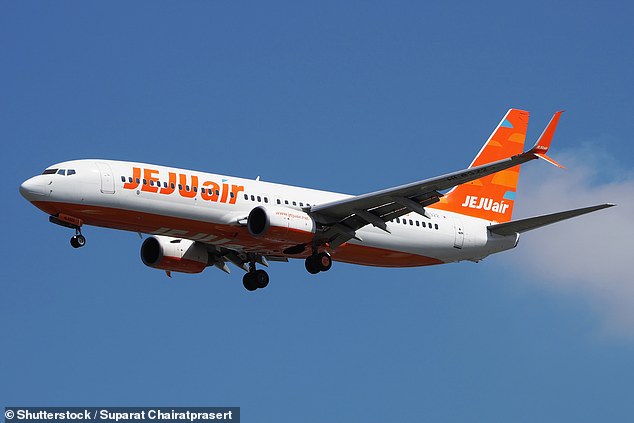
Both sadly died when their Jeju Air flight was returning from Bangkok, Thailand to Muan International Airport on December 29, 2024 (stock)
‘Since that was the only flight scheduled to arrive at the airport at that time, I went there immediately,’ he said.
Lee Seung Yeal, who was part of the emergency service team who attended the crash described the scene as ‘horrific’.
‘The two engines were buried in the earth, and the forward fuselage was completely shattered and burnt. Only the rear fuselage was left,’ he recalled.
The airport was soon filled with the family members of passengers believed to be on the flight, all hoping for news.
‘At first I believed that my family would come back, I wanted to believe that,’ Geun-woo said.
‘But as soon as I entered the airport I could feel that the atmosphere was not good.’
The remains of birds were found in both engines of the plane and video footage in the documentary shows the vessel gliding through a flock.
Both of the engines are thought to have lost power afterwards.
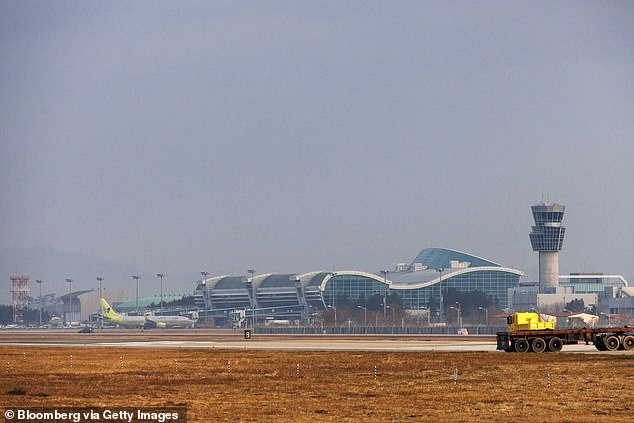
The airport is located near to where water birds like to congregate, and that morning air traffic control alerted the Boeing 737 pilots that birds were in the area (stock)
The documentary features a lab in Washington DC where samples from bird strikes are sent to for analysis.
Dr Carla Dove from the Feather Identification Lab revealed how the number of bird strikes are increasing each year.
‘We’re not sure the reasons for this, it could be there is more awareness, maybe there’s more flights out of a certain area, but we do know that there is a significant increase in bird strikes annually,’ she said.
In 2023, America saw a 14% increase from the previous year.
Samples from the South Korean flight helped to identify the birds as Baikal teal ducks, a bird known to form large flocks.
The position of the airport meant it was sat in between two areas the ducks used, and would cross over the runway to access each.
Conservation Scientist Dr Nial Moores said: ‘The majority of these birds have to commute in between where they sleep and where they feed.
‘In the case of Muan, because you have tidal flat on one side, to the west of the runway, and then you have ricefields to the east of the runway, any bird that is trying to feed on the tidal flat will have to cross the runway.’
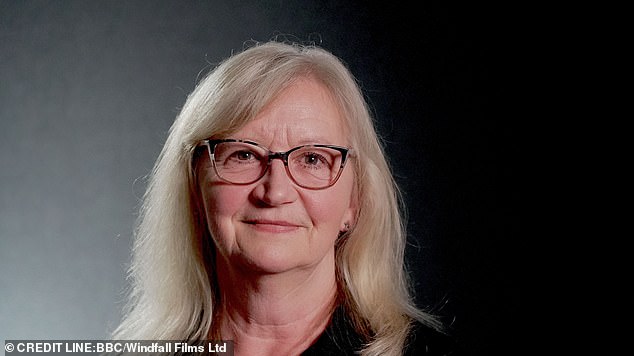
Dr Carla Dove (pictured) from the Feather Identification Lab revealed how the number of bird strikes are increasing each year
The documentary went on to look at how the moments before the crash played out, and outlined how the plane’s landing gear was deployed.
But, the aircraft seemed try and avoid hitting the birds and climbed, attempting a ‘go-around procedure’.
‘An airplane like the 737 can be flown without hydraulic pressure, it still has wires and cables that go out to the flight control services,’ Dr Shawn Pruchnicki, from the Centre for Aviation Studies, said.
‘The airplane doesn’t fly as easily as it does when you have hydraulic pressure, but it certainly can be done.’
However, when the Jeju Air plane did approached the runway, its landing gear was not retracted and it did not appear that the pilots were able to manually deploy it.
Aviation Safety Expert Professor Bohun Kwon explained how the landing gear in the plane could be deployed manually by pulling three cables ‘for about 30 seconds’.
‘But when you’re doing a landing manoeuvre like this, or in an emergency, it’s very difficult,’ he added.
In the end, the plane is estimated to have hit the runway at 200mph and wasn’t able to slow down.
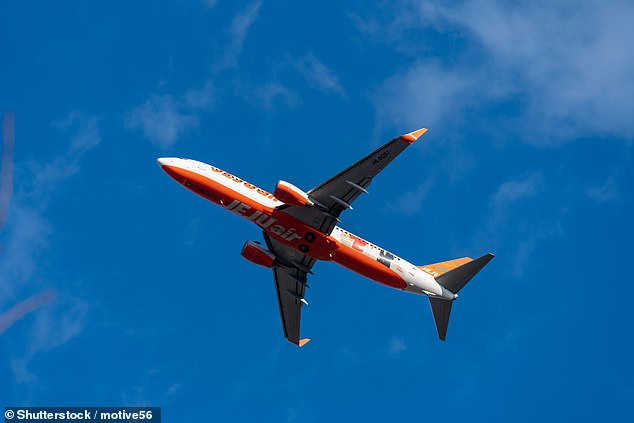
The documentary went on to look at how the moments before the crash played out, and outlined how the plane’s landing gear was deployed (stock)
Instead, it crashed into a barrier 250 metres from the end of the runway, which Dr Pruchnicki claims is the reason for the number of deaths.
‘In my opinion, the biggest reason this accident had such a high fatality rate was the barrier at the end of the runway. That should not have been there, that aircraft should have been able to go off the runway into a protected area,’ he argued.
The barrier contained a localiser, which is supposed to easily break on impact, but in this case placed on an approximately two-metre concrete mound that was higher than ‘installation standards’ of 7.5cm.
‘If international standards had been followed as recommended, this tragedy would probably not have happened,’ Professor Kwon claimed.
The Daily Mail approached Jeju Air and the Korea Airports Corporation for comment.
The documentary covers several other aviation disasters, including the Delta Connection Flight that crashed in Toronto on February 17 this year.
Hannah Krebs was onboard the flight from Minneapolis to Toronto.
The plane was dealing with freezing temperatures at the time and strong winds as it descended.
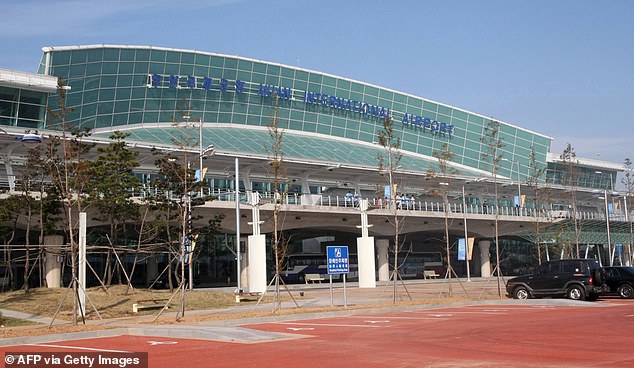
But, the aircraft seemed try and avoid hitting the birds and climbed, attempting a ‘go-around procedure’
‘Once we started descending we started getting knocked around quite a bit by the wind but nothing felt really wrong to me other then it was quite a turbulent descent and that continued right up until we hit the ground,’ Hannah recalled.
When the plane touched down, footage suggests the landing gear collapsed and the plane flipped over.
Hannah added: ‘I was shocked that we survived, once we hit the ground, I could tell that it was way too hard. Everything started shifting this way.
‘Suddenly, before I knew it, we were upside down. I could hear the metal scraping on the ground as we skidded along.
‘And we skidded for what felt like forever and then when we stopped, it all got quiet.’
All 80 passengers and crew members survived the crash and managed to evacuate out of the plane quickly.
‘There was no stampeding, no rush, everyone just got into an orderly line and evacuated,’ Hannah said.